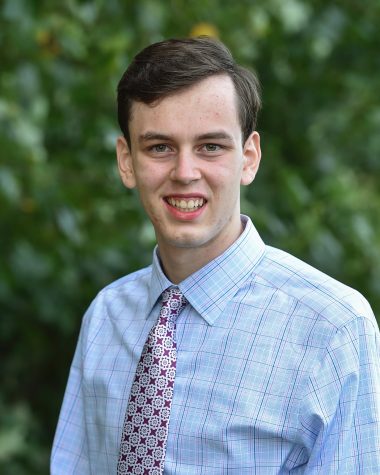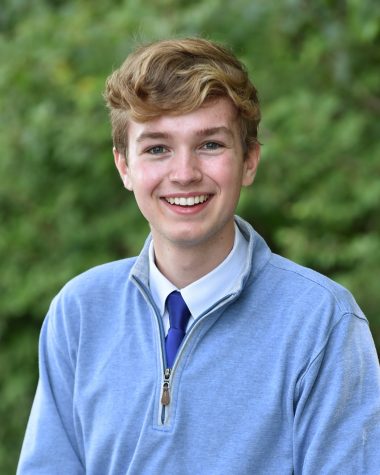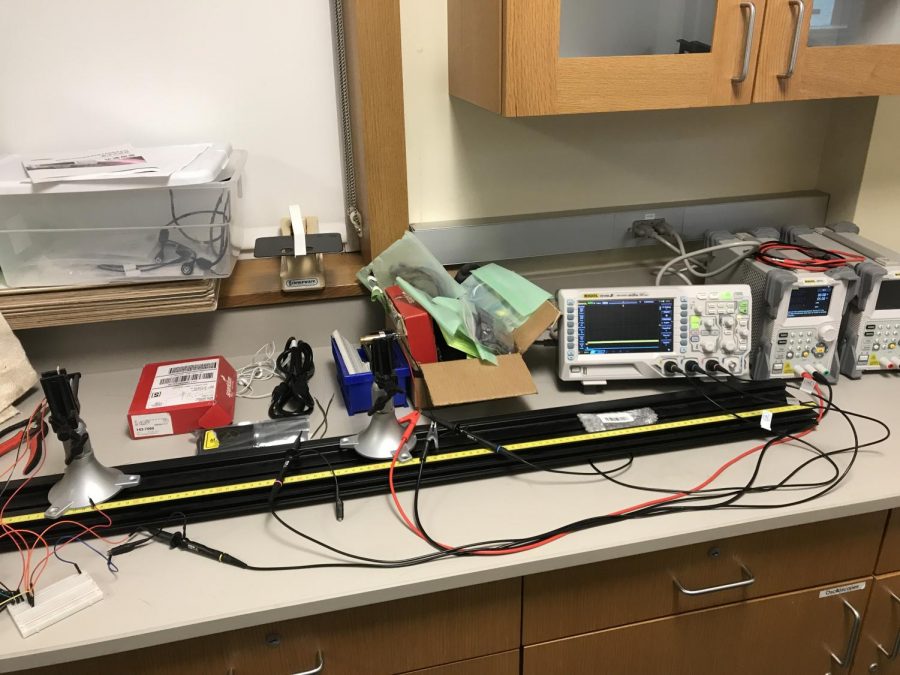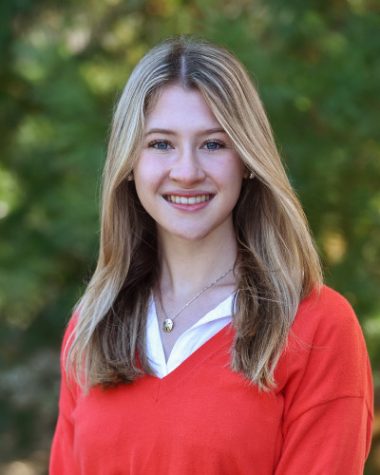STEM Scholars: A Highlight on Jonathan Hobson and Brian Douglas
January 6, 2021
At St. Luke’s, the STEM Scholars Program is offered to seniors who have interests in Science, Technology, Engineering, and Math. In the program, students engage in the scientific research process, conducting research on a topic of interest with guidance from program advisors Dr. Warner and Mr. LeBris. Two of this year’s STEM Scholars include Jonathan Hobson ‘21 and Brian Douglas ‘21, who are working together to build a laser that can act like a human voice and control smart home devices. These students eventually present their findings at the SLS Scholars Symposium in April and write scientific journals by the end of the program in May.


Hobson and Douglas, basing their project on research from the University of Michigan, are expanding on the work of Light Commands to establish the boundaries of the technology while further understanding the physics behind it. Light Commands utilizes light to silently and invisibly command various smart home devices through a vulnerability in their microphones. They plan to eventually produce a device that utilizes capabilities revealed by Light Commands to the greatest extent, making it the easiest to use while optimizing form factor and the injected signal.
To further explain the science behind their project, Douglas and Hobson are exploiting the MEMS-based microphone that many smart home electronics use. This specific type of microphone measures the acceleration of air particles and has a small membrane that acts as a parallel-plate capacitor with the backplate enclosure. This essentially means it has a small membrane that vibrates as air particles from sound waves collide with it. Although it normally measures changes in sound pressure, Light Commands established that the microphone can be manipulated with photoacoustic and photoelectric effects, allowing its membrane to be controlled by a laser. If you are curious about the impressive science behind their project, you can view the diagram that Douglas and Hobson made to explain their process here.
When talking about his interest in this area of science, Douglas shared that he has always had an interest in physics and engineering. Through their project, he is putting his interest to use to produce something that is complex and theoretical, yet everyone can comprehend their end goal and its implications.
To summarize their project, Hobson said, “We’re doing something unfamiliar with devices that people are familiar with, and we think that’s pretty cool.”
In response to the same topic, Hobson joked, “I like that this area of science falls in a legally and ethically ambiguous area.”
There are not yet any existing court rulings specifically about applying the laser that they are researching, despite the fact that there are security concerns involving it. Hobson further explained these threats, bringing up a hypothetical situation that could potentially cause issues:
“A bad actor could shoot a laser through a window and tell Alexa to open a garage door or shoot a laser at your iPhone and tell Siri to open a website or an email containing malware. By researching this topic, we essentially become white-hat hackers, and the outcome of our research has the potential to aid in mitigating the previously mentioned threats.”
Despite the possible problems that could arise from a laser, Hobson redeemed them, eloquently stating, “Lasers are awesome.”
Douglas became interested in Light Commands’ work from a YouTube video as he was thinking about applying to the STEM Scholars program. Curious about the technology, he found an official paper that Light Commands had published and knew he had to do something with the topic. This eventually led him to propose the idea of a laser-based signal injection to Hobson, with whom he formed a specific focus for the project over a couple of months.
Hobson was initially interested in doing his STEM project on something involving pure mathematics, yet it was quickly clear to him that type of project would not be audience-friendly at the Scholars Symposium, leading him to pursue a project that he felt would be more interesting to others. When Douglas introduced the project idea to him, Hobson was intrigued because while the project was still mathematically rigorous, it also consisted of physical components with a clear purpose.
With a project this complex, there are bound to be challenges. Since Douglas and Hobson are pushing the boundaries of experimental technology, they have run into many obstacles, from non-working microcontrollers to theoretical mathematical calculations. They have analyzed each challenge as it came, devised a solution, and implemented it to ultimately persevere.
Despite pandemic-related challenges, Douglas and Hobson have found ways to persist. A large amount of their project relies on lab-grade electronics equipment, something that was crucial in their early testing stages. With the lab space unavailable at times due to Covid, they have established plans and protocols for working with some of the equipment from home.
In terms of their next steps, Douglas and Hobson are working on a calculus-based model design to analyze trends in their data and aid them in exploring the specific physical properties behind the membrane – laser interactions.
When advising future STEM Scholars, Hobson said, “One of the most challenging parts of the STEM Scholars program is picking a topic; some people have too many ideas, some people struggle to come up with one. Regardless, it’s never too early to start thinking about specific fields that interest you and begin writing down questions that you’d like to find answers for.”
Continuing on Hobson’s point, Douglas advised, “You’ll hear it 100 times over, but it really is all in the project. Choose something that you love and apply to the program because of that, not because you want the prestige or the course on your transcript. That way, every moment spent on it will be enjoyable.”




